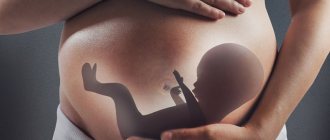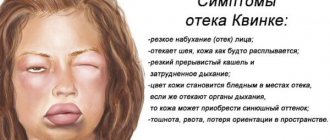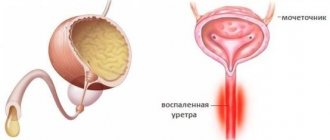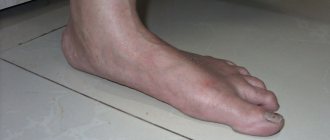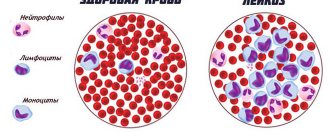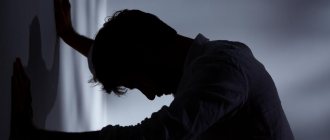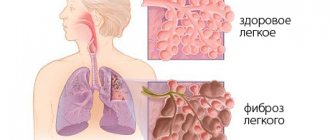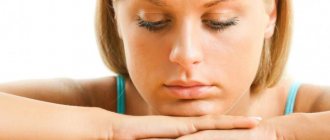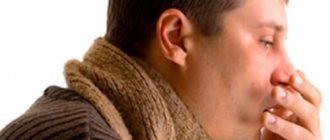Concussion is one of the most common traumatic brain injuries. It accounts for up to 80% of all skull injuries. Every day in Russia, according to statistics, more than 1000 people get a concussion. This injury itself does not cause structural macroscopic changes in the brain. The disorders that arise during a concussion are purely functional. A concussion is not life-threatening.
It may seem that due to the ease and functionality of this injury, it may not be treated at all, and there is no need to visit a doctor. This is a very erroneous opinion. A concussion, although it is a mild traumatic brain injury, nevertheless, if left untreated, can leave behind some unpleasant consequences that can complicate the patient’s life.
Concussions most often occur in young people, children and adolescents. This is due to children's pranks and teenage recklessness, and in adults - road, domestic and work injuries. Moreover, it should be taken into account that a concussion occurs not only with a direct blow to the head or a blow to the head. This injury also occurs indirectly, for example, when a person slips and falls on his buttocks. The shock wave also reaches the skull, which can cause a concussion.
Causes of concussion
The main cause of a concussion is a head injury; a sudden disruption of the functions of the vascular system and brain occurs. Therefore, pain in the head, dizziness, and loss of orientation immediately occur.
Most often, the causes of concussion are industrial, domestic and sports injuries, road traffic accidents, and a large percentage are criminal circumstances.
A person losing consciousness for a short period of time after hitting the head may indicate a concussion. But often this does not happen and the person continues to live his daily life, thereby causing even greater harm to his health.
How does a concussion occur?
In the normal state, the brain is protected from touching the bones of the skull by cerebrospinal fluid, the liquid substance in which the brain floats. The contact of the cerebral cortex with the inner shell of the skull causes a concussion. The gray matter of a person who has been injured hits one side of the skull and receives a counter-impact on the other side.
The cause of a concussion may be:
- Falling, even from your own height.
- Injury resulting from a car accident, work situation or after an attack by hooligans.
- Contusion of the head or neck caused by negligence (walking and hitting a pole, riding a bicycle and not noticing a branch).
- A blow received while playing sports.
Multiple concussions are diagnosed in boxers, rugby players, and other contact sports athletes. Even a baby who is carelessly shaken can get injured.
The main thing is that if a person suffers a concussion, he needs to provide him with first aid as quickly as possible and provide adequate treatment.
What causes a concussion?
The name of the injury speaks for itself: under the influence of mechanical force, the brain is shaken inside the skull. In this case, a temporary disconnection of the cerebral cortex from the stem (deeper-lying) sections occurs, and disturbances appear in neurons at the cellular and molecular level. A spasm of blood vessels also occurs, followed by their expansion, which means that the blood flow changes for some time. All this causes dysfunction of the brain and the appearance of various nonspecific symptoms. With treatment, after normalization of processes in the brain, all functions return to normal and symptoms disappear.
Medicines
The first medications prescribed to a patient are neuroprotectors. They normalize the metabolic rate in brain tissue, which promotes proper nutrition of cells and their restoration. Another function of neuroprotectors is to eliminate pathological changes in neurons and protect them from insufficient blood supply. At the initial stage of treatment, the following pills for concussions are often prescribed:
- Semax;
- Ceraxon;
- piracetam;
- picamilon;
- Cerebrolysin;
- encephabol;
- nootropil;
- Lucetam;
- glycine;
- alvesin;
- methionine
The patient may also be prescribed painkillers for a concussion:
- sedalgin;
- pentalgin;
- analgin;
- baralgin;
- maxigan.
In case of mood swings, the patient may also be prescribed sedatives:
- carvalol;
- valocordin;
- valerian;
- motherwort.
The attending physician determines which medications to prescribe for a concussion based on the type and severity of the injury, the patient’s age and state of health. In some cases, magnesium is prescribed. In adults, the recovery period takes longer than in children. With age, the body's supply of its own vitamins and cells that promote rapid regeneration decreases.
Dehydrants can also be used during treatment after a concussion. These medications help get rid of excess water in the body, which helps relieve brain swelling. The most commonly used drug is called Diacarb. Diuretic medications are also used, which also remove excess fluid from the victim’s body:
- arifon;
- lasix;
- aldactone;
- veroshpiron;
- furosemide (tablets or injections);
- hypothiazide;
- indap;
- indapamide.
Among various remedies, for such damage, Mexidol is also prescribed to improve blood circulation. In order for medications for concussions to show the expected results and not cause side effects, it is important to warn the doctor in advance about possible allergies to certain drugs, if any.
The final stage of the treatment course of therapy involves vasotropic drugs. They act on the walls of blood vessels, strengthening them and making them more elastic. This prevents pressure from a possible hematoma. They also eliminate vascular spasm, improve the movement of oxygen and red blood cells through the circulatory system and stabilize metabolism in the walls of blood vessels. Based on the situation, doctors may prescribe a combination of medications. In this case, patients drink both vasotropic and nootropic drugs at the same time.
Symptoms and signs of a concussion
| Symptoms | Signs of violations | Mechanism of occurrence |
| Immediately after injury | ||
| Stupor | State of stupefaction, confusion. The muscles are tense, there is a frozen expression on the face. | Emotions and body movements are inhibited. This is the result of a disruption in the transmission of nerve impulses in the cerebral cortex. |
| Loss of consciousness | The person does not react to stimuli, does not feel anything. This can last from a few seconds to 6 hours depending on the force of the impact. | Disturbance in the transmission of impulses along the processes of nerve cells. In this way, the body reacts to a lack of oxygen, which arose due to impaired blood circulation in the brain. |
| Vomiting once | The contents of the stomach are expelled through the mouth. At the same time, breathing becomes more frequent, saliva and tears are released. Sometimes vomiting may be repeated. | The cause is circulatory disorders in the vomiting center and in the vestibular apparatus. |
| Nausea | Unpleasant sensations, pressure, heaviness in the epigastric region. | Such sensations are caused by stimulation of the vomiting center. This formation is located in the medulla oblongata. When struck, it experiences irritation. |
| Dizziness | Occurs at rest and intensifies when changing body position. | Caused by circulatory disorders in the vestibular apparatus. |
| Increased or slow heart rate (less than 60 or more than 90 beats per minute) | Feels like a rapid heartbeat or a feeling of weakness due to the fact that the organs are experiencing a lack of oxygen. | The phenomenon is associated with increased intracranial pressure, compression of the vagus nerve and cerebellum. |
| Paleness, which is replaced by redness of the facial skin (vasomotor play) | Redness of the skin of the neck and face abruptly gives way to pallor. | Violation of the tone of the autonomic nervous system. As a result, small arteries in the skin periodically widen or narrow. |
| Headache | Throbbing pain in the back of the head or at the site of the bruise. Pressing and bursting pain throughout the head. | Unpleasant sensations are associated with an increase in intracranial pressure and irritation of sensitive receptors on the lining of the brain. |
| Noise in ears | A feeling of hissing or ringing in the ears. | Due to increased pressure in the skull, compression of the large auricular nerve occurs. This causes the hearing aid to malfunction. As a result, a person seems to hear noise due to irritation of auditory receptors. |
| Pain when moving the eyes | Reading or looking away causes discomfort in the eyeballs or temples. | Unpleasant sensations appear due to increased intracranial pressure. |
| Impaired coordination of movements | A person gets the impression that the body does not listen to him well, movements are performed for a long time, as if they are delayed. | These are consequences of impaired transmission of nerve impulses from the cerebral cortex through the nerves to the muscles, as well as poor blood circulation in the vestibular apparatus. |
| Sweating | Feeling that palms are cold and wet. Droplets of sweat appear on the face and body. | The sympathetic nervous system, which controls the functioning of internal organs, is too excited. It causes the sweat glands to work actively and produce more sweat than usual. |
| In the first hours after injury | ||
| Constriction or dilation of both pupils | The pupils react normally to light, and the person does not feel anything unusual. But the doctor may notice that the reaction of the pupils is incorrect. If the pupils are different sizes, then this indicates a more serious brain injury than a concussion. | Intracranial pressure affects the centers of the autonomic nervous system, which regulate the contraction of muscles that constrict or dilate the pupil. |
| Trembling of the eyes when looking to the side | When a person looks to the side, his eyes begin to tremble. It is difficult to see objects without turning your head towards them. | This phenomenon is associated with damage to the inner ear, vestibular apparatus and cerebellum. These structures cause the eye muscles to contract rapidly. As a result, the victim cannot focus his gaze. |
| Asymmetry of tendon reflexes | These reflexes are checked by a neurologist. He hits the tendons with a hammer, and in response, the arm bends at the elbow joint or the leg bends at the knee. | Normally, the right and left limbs bend equally. Increased intracranial pressure disrupts the functioning of the brain and nerve fibers that are responsible for performing reflex actions. |
| Symptoms removed in time (appear after 2-5 days) | ||
| Photophobia and sensitivity to sound | A person perceives ordinary sounds or a normal level of illumination inadequately. He is irritated not only by loud, but also by moderate sounds. | Due to the fact that after an injury the reflex constriction of the pupils is impaired in a person, bright light causes discomfort. Disruption of the nerves that control the hearing aid causes irritation from sounds. |
| Depression, moodiness and irritability | Bad mood, reluctance to move, work and have fun. | Irritability is based on a disruption of connections between nerve cells in the cerebral cortex that are responsible for emotions. |
| Sleep Anxiety | Difficulty falling asleep, waking up at night or early. | Sleep problems are associated with unpleasant emotions that a person experiences, with stress and overexcitement, as well as with impaired blood circulation in the brain |
| Amnesia | Memory loss. The person cannot remember what happened immediately before the injury. Usually, the stronger the blow, the longer the period of time lost from memory. | The process of memorizing and reproducing events in memory takes place in several stages. If this chain is disrupted at the time of injury, then some events may not be stored in long-term memory. |
| Lack of concentration | A person cannot concentrate on what he is doing at the moment. He is often distracted, becomes inattentive, and switches to other activities. | Poor concentration is caused by a disruption in communication between the cerebral cortex and subcortical structures. |
Do you have a concussion? What are the signs of a concussion?
If there are no dangerous signs, but there was loss of consciousness, loss of memory (with a concussion and even more so with more severe injuries, the victim may not remember how he received the injury and what happened next), vomiting, redness of the face after the injury, there were and/or there is a headache, dizziness, drowsiness, weakness, lethargy, difficulty concentrating, nausea, loss of appetite, tinnitus, darkening or sparkles in the eyes, impaired balance and coordination of movements, intolerance to bright light and loud sounds, then this is a concussion or a heavier option.
Concussion grades are not currently used. However, a mild concussion does exist and is different from a normal concussion.
The most important symptom is loss of consciousness. The so-called knockout is a mild concussion, and it manifests itself only as a temporary loss of consciousness and nothing else. If consciousness did not turn off completely, but in the first minutes after the injury the utterance of meaningless words that did not correspond to the situation, the inability to answer questions, and slurred speech were noted, then this is also a concussion. The remaining symptoms may be a mild concussion, or they may simply be a reaction to stress or the result of an exacerbation of any diseases, for example, vegetative-vascular dystonia.
Treatment of concussion
First aid for concussions at home
First aid for a victim with a concussion, if he quickly regains consciousness (which usually occurs with a concussion), is to give him a comfortable horizontal position with his head slightly elevated.
If the person who has received a concussion continues to be unconscious, the so-called rescue position is preferable -
- on the right side,
- head thrown back, face turned to the ground,
- the left arm and leg are bent at right angles at the elbow and knee joints (fractures of the limbs and spine must first be excluded).
Photo: safe position for unconscious victims
This position, ensuring the free passage of air into the lungs and the unhindered flow of liquid from the mouth to the outside, prevents breathing problems due to the retraction of the tongue, the flow of saliva, blood, and vomit into the respiratory tract. If there are bleeding wounds on the head, apply a bandage.
All victims with a concussion, even if it seems mild from the very beginning, must be transported to an emergency hospital, where the primary diagnosis is clarified. Victims with a concussion are placed on bed rest for 1-3 days, which is then, taking into account the characteristics of the course of the disease, gradually extended over 2-5 days, and then, in the absence of complications, discharge from the hospital for outpatient treatment is possible (lasting up to 2 weeks ).
Drug therapy
Drug treatment for concussion is often not required and is symptomatic (the main treatment is rest and healthy sleep). Pharmacotherapy is aimed mainly at normalizing the functional state of the brain, relieving headaches, dizziness, anxiety, insomnia and other complaints.
Typically, the range of medications prescribed upon admission includes painkillers, sedatives and sleeping pills, mainly in the form of tablets, and, if necessary, injections. Among the painkillers (analgin, pentalgin, dexalgin, sedalgin, maxigan, etc.), the most effective drug for a given patient is selected. They do the same for dizziness, choosing one of the available medications (Belloid, cinnarizine, platyphylline with papaverine, tanakan, microzer, etc.).
Valerian, motherwort, Corvalol, valocordin, as well as tranquilizers (afobazole, grandoxin, sibazon, phenazepam, nozepam, rudotel, etc.) are used as sedatives. To eliminate insomnia, Donarmil or Relaxone is prescribed at night.
Conducting a course of vascular and metabolic therapy for concussions contributes to a more rapid and complete recovery of brain dysfunction. A combination of vascular (Cavinton, Stugeron, Sermion, Instenon, etc.) and nootropic (glycine, nootropil, pavntogam, Noopept, etc.) drugs is preferable.
As options for possible combinations, a daily dose of Cavinton, 1 tablet three times a day, can be presented. (5 mg) and nootropil 2 caps. (0.8) or stugeron 1 tablet. (25 mg) and noopept 1 tablet. (0.1) for 1-2 months. A positive effect is brought by the inclusion in the course of therapy of drugs containing magnesium (Magne B6, Magnelis, Panangin) and antioxidants Cytoflavin 2 t 2 times a day, Mildronate 250 mg 1 t 3 times a day.
To overcome frequent asthenic phenomena after a concussion, the following are prescribed: phenotropil 0.1 once in the morning, cogitum 20 ml once a day, vazobral 2 ml 2 times a day, multivitamins and polyminerals such as Unicap-T, etc. .P. 1 tab. 1 per day. Tonic preparations include ginseng root, eleutherococcus extract, lemongrass fruit, saparal, and pantocrine. In elderly and senile people who have suffered a concussion, anti-sclerotic therapy is intensified. They also pay attention to the treatment of various concomitant diseases.
To prevent possible deviations in the successful completion of a concussion, clinical observation is required for a year by a neurologist at the place of residence.
Necessary conditions for recovery
How to treat a concussion at home?
Treatment of a mild concussion at home is possible if the patient meets a number of conditions.
Prohibited:
- Work or play on the computer.
- Watch TV.
- Write SMS and talk on a mobile phone.
- Study.
- Talk for a long time and listen to others' conversations.
- Violate any of the above points, even if you really want to.
Need to:
- Close all windows to prevent bright light from entering the room where the patient is.
- Avoid noise and harsh sounds.
- Maintain bed rest.
- Take all medications prescribed by the doctor.
- Don't let your brain get stressed.
- Eat properly. The diet should include foods that are rich in proteins, microelements and vitamins.
- Maintain a daily routine.
Recommended intake:
- Sedatives and sleeping pills (only as prescribed by a doctor!).
- Vascular drugs and nootropics.
- Decoctions of soothing herbs. It is possible to take the collection, for example: a decoction of a mixture of lemon balm, motherwort and mint. Before taking any infusion, you should consult your doctor.
- Painkillers. Suffering a headache as a result of a concussion is highly discouraged.
- Vitamin and mineral complexes.
Depending on the patient’s condition, the doctor prescribes other medications (tonic, anti-sclerotic, etc.). In general, treatment at home lasts from one to five weeks.
During the first week, bed rest is mandatory. This regimen is tiring, most often it is difficult for the patient to lie down all day long and do nothing, but this is the most necessary and effective stage of therapy. Treatment for concussions is most difficult for children.
Massage and physiotherapy are prescribed after two to three weeks of drug treatment.
Folk remedies for treating concussions
You can begin treatment with traditional medicine only after consulting a neurologist in order to exclude possible complications.
- For tremors, you can take a soothing infusion of hop cones, buckthorn bark, lemon balm, fireweed, valerian root, St. John's wort and birch leaves, taken in equal proportions. To prepare it, 3 tbsp. l. collection, pour 1 liter of boiling water and brew in a thermos. After 2 hours, the infusion will be ready. The course of treatment is 2 weeks. You need to take it 4 times. per day 0.5 cups. In addition to the calming effect, this infusion also has a restorative property;
- For a concussion, take an infusion of myrtle and elecampane. To prepare it, the leaves of these herbs are finely chopped, and then 1 tbsp. l. the resulting collection is poured with 2 tbsp. boiling water and leave for 0.5 hours. The course of treatment is 2 months. At the same time, it is better to drink this infusion after 7 days after brain damage, 200 ml 2 times a day;
- An excellent source of nutrition for the brain during a concussion is a mixture of chopped walnuts and honey. It must be taken daily for six months, 1 tbsp. l. (for children over 3 years old – 1 tsp for 2 months);
- In addition, you can speed up the brain recovery process with the help of natural vitamins. To do this, prepare a salad from fresh spinach (200 g), fresh onions (50 g) and 2 chicken egg yolks, which is seasoned with 2 tbsp. sunflower oil;
- If insomnia and headache appear after a concussion, you can use an infusion of cinnamon and mint. To prepare it, 1 tsp. ground cinnamon mixed with 1 tbsp. finely chopped mint. The resulting composition is poured into 1 liter of boiling water and infused for 0.5 hours in a thermos. You need to drink it 4-6 times a day, 100 ml, but depending on your overall health, the dose can be reduced. It is especially effective in the first days after injury;
- To reduce the intensity of concussion symptoms, use an infusion of lemon balm, plantain, dead nettle, oregano, mullein, clover flowers, rose hips, wild rosemary branches and black currant shoots, mixed in equal quantities. 2 tbsp. l. collection you need to brew 1 liter. boiling water and place in a water bath for 10 minutes, cover with a lid. When the broth has cooled, it needs to be strained. Take 3 tbsp. 3 times a day. Depending on your overall health, you can increase the portion of the decoction by 1.5-2 times;
- Also, for a concussion, take an infusion of St. John's wort three times a day, 1/3 cup (2 teaspoons of the herb, pour 1 cup of water and boil over low heat).
First aid
If a concussion does occur, you must adhere to the following algorithm of actions. What to do if you have a concussion.
The first action is to call a medical ambulance . First aid for a concussion is to lay the patient down, with the head elevated, and do not allow the victim to fall asleep, eat or drink. It is strictly forbidden to suddenly move or transport the patient; you should also not give medications without prior examination by a medical professional.
If the victim experiences numbness and immobility of the limbs, this indicates possible damage to the spinal cord. In this case, moving the victim is contraindicated.
It is better to unbutton the clothes on the patient’s body so that nothing restricts breathing, do not create a crowd, in order to ensure normal access of oxygen to the victim. Ensure normal patency of the upper respiratory tract. If the patient is unconscious, to ensure breathing, you should turn your head to the side and stick out your tongue.
If for some reason it is not possible to call medical help and it is necessary to transport the patient yourself , transportation is allowed in a supine position in the back seat. In order to bring the victim to consciousness, you can use a piece of cotton wool moistened with a few drops of ammonia.
If, after the victim regains consciousness, he constantly complains of a worsening headache, there are bouts of vomiting, the patient feels sick, the condition worsens, there is a possibility of intracranial hemorrhage.
In this case, first aid for a concussion will not have a positive result. This situation requires prompt provision of assistance by medical workers. In a medical institution, the necessary examination is carried out; if the diagnosis is confirmed, only neurosurgical intervention can help the patient.


